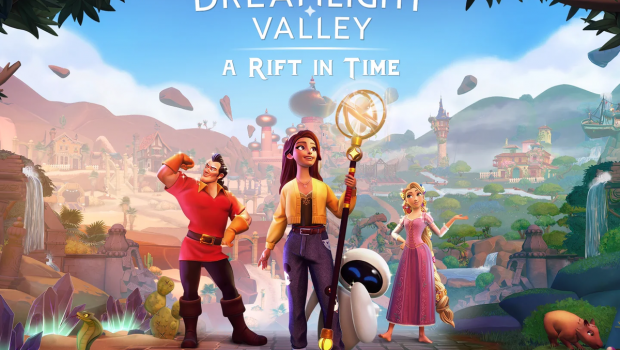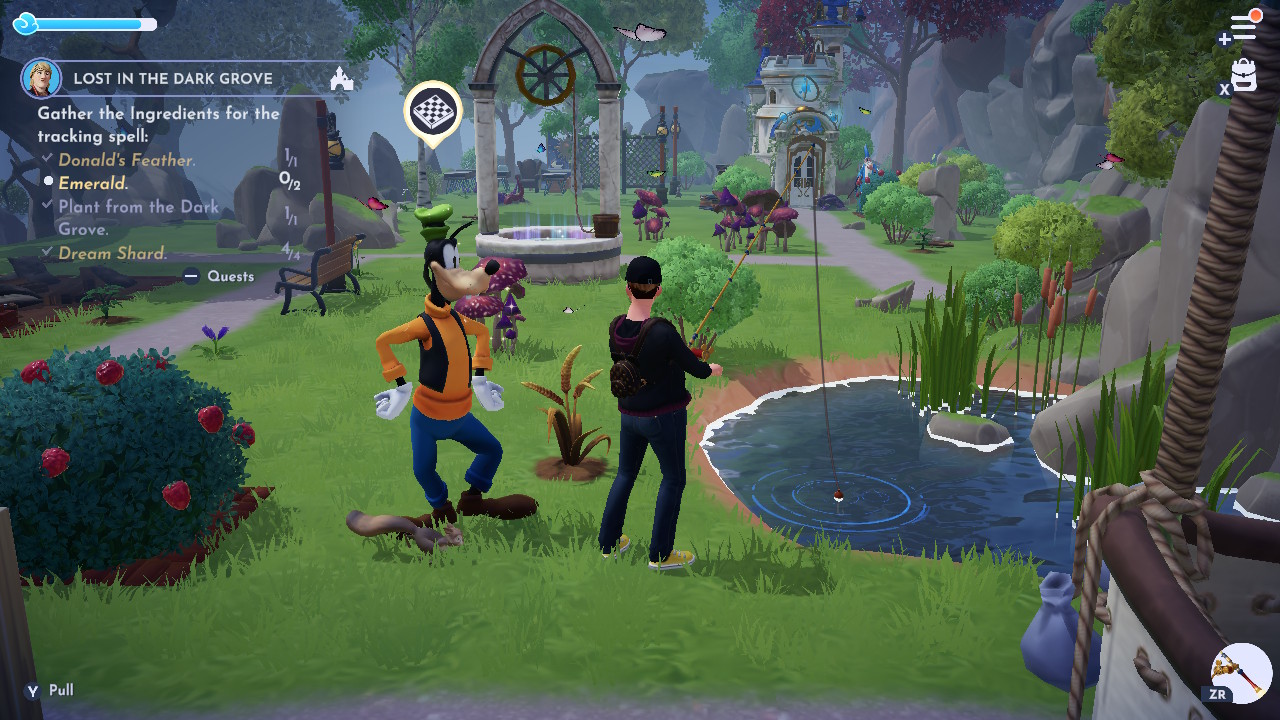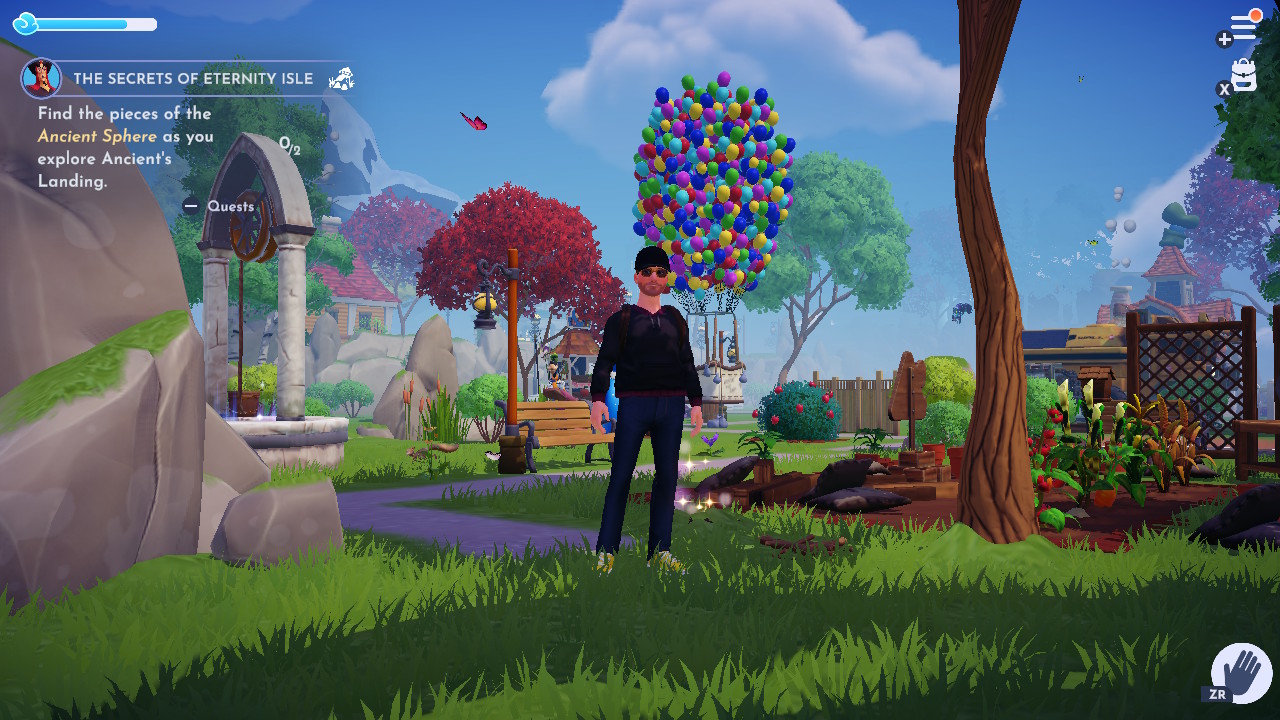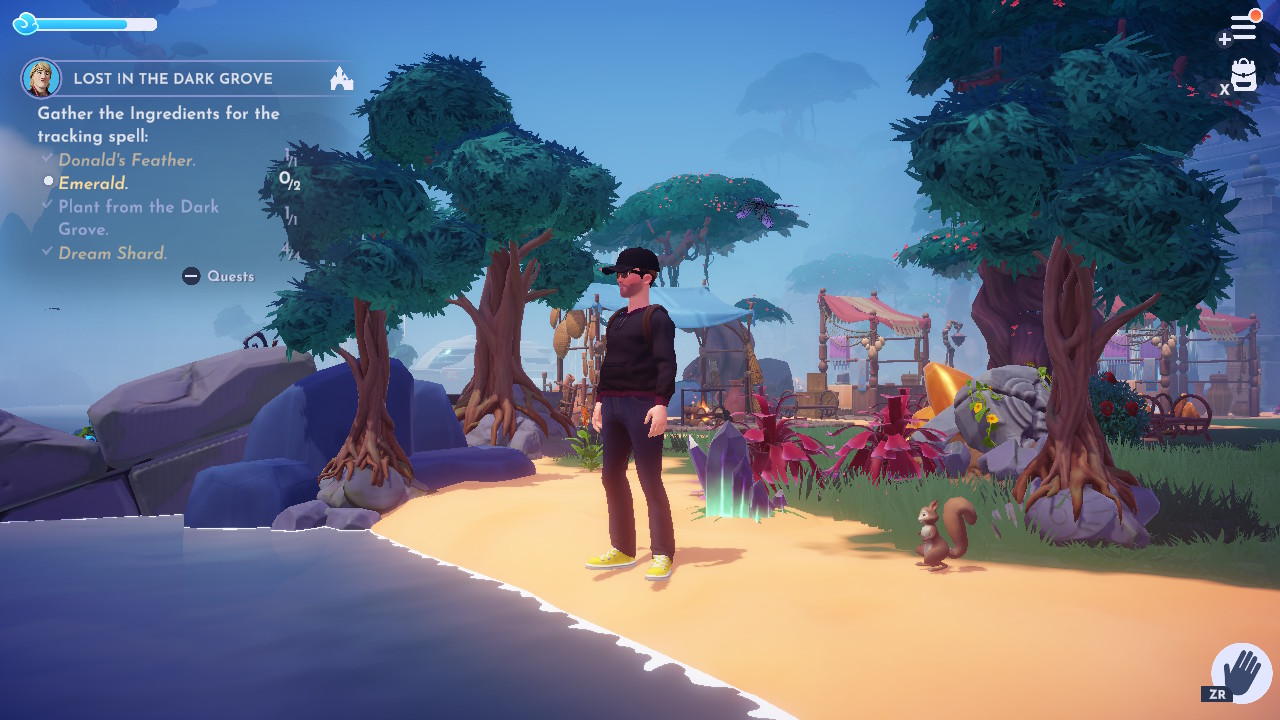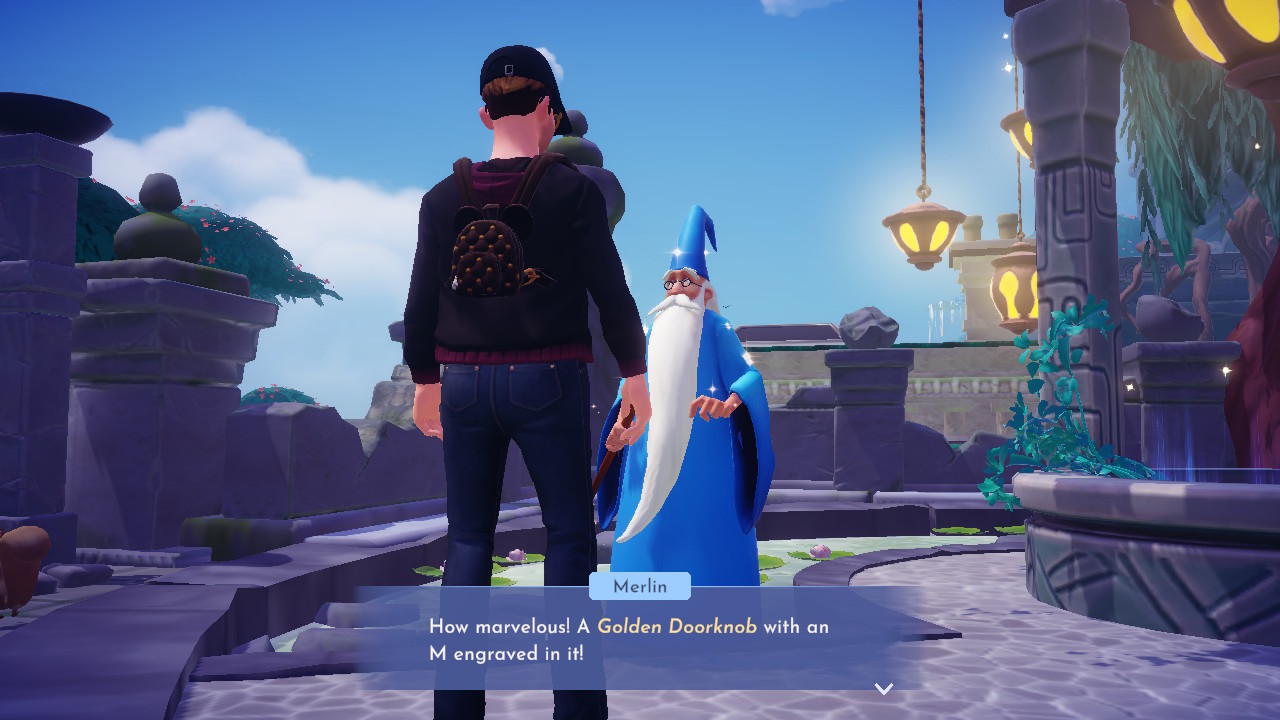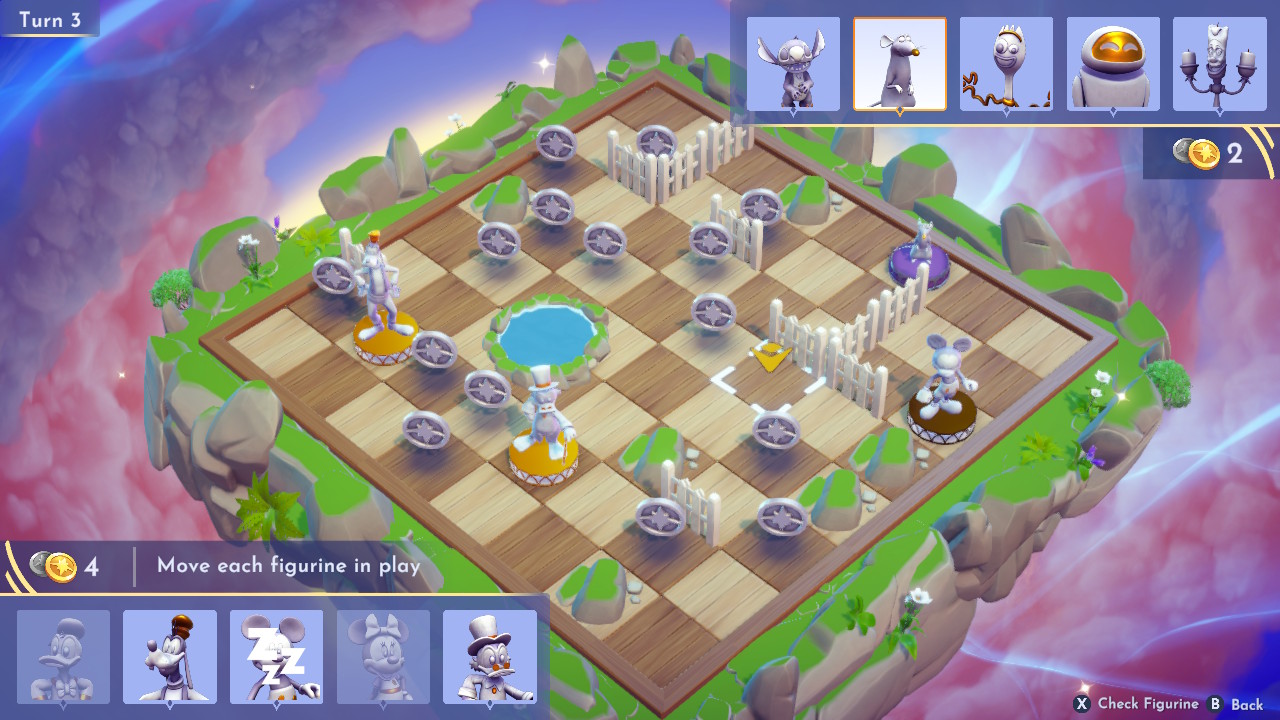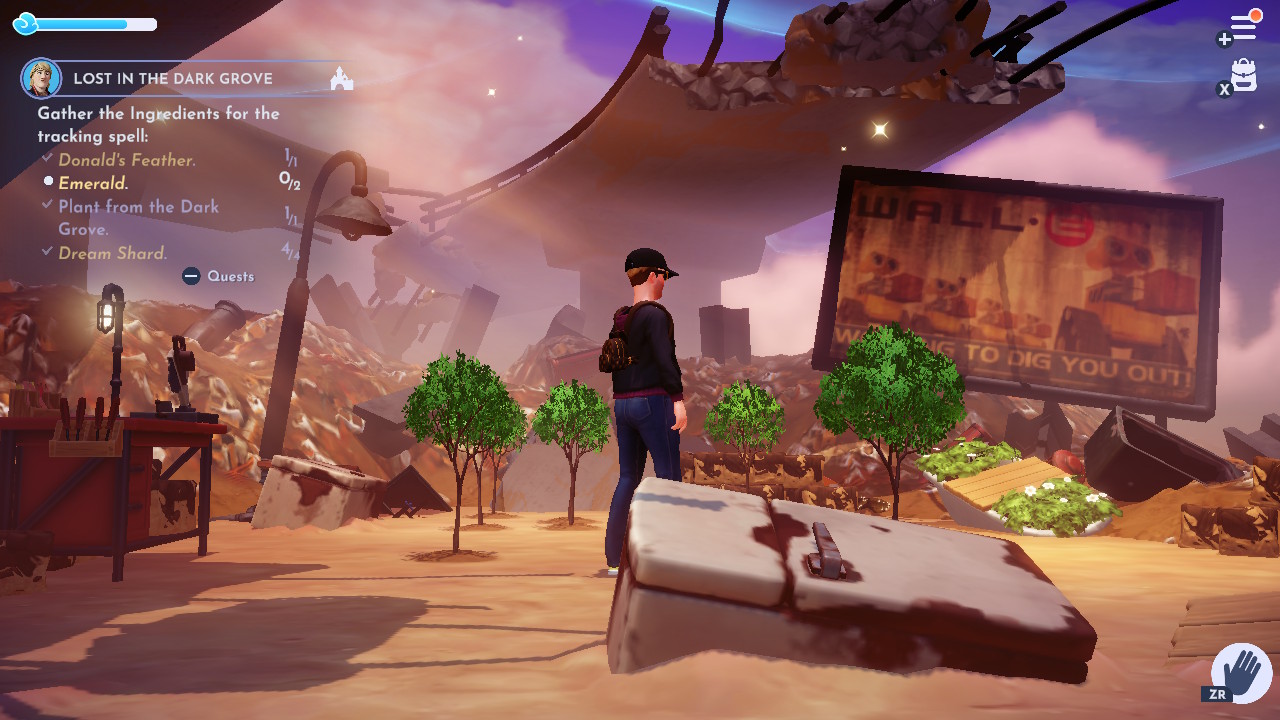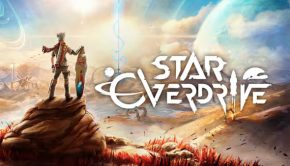Disney Dreamlight Valley & A Rift In Time Switch Review
Summary: Disney gaming done right!
4
A Dream Come True
It doesn’t seem to matter where I am in Dreamlight Valley – if I’m fishing, be sure to know that Goofy is just around the corner. I can see him on my map, all the way down by the beach, but if I reach for my rod, that ah-hyuk-hyuking dog(?) comes across the horizon, green hat in tow. What makes it worse is, sometimes, I feel like he does it to make me feel bad about myself. Look, fishing can be difficult in this game, Goofy, I don’t need you to look disappointed in me, too. Forget it, I’ll see if Wall-E needs help with his garden instead.
As much as my dislike (and possibly my distrust) for Goofy seems to grow in Disney Dreamlight Valley, it’s these interactions with familiar faces that make the game such a unique experience. Just like during a character breakfast at Disney World, for example, Dreamlight Valley does a great job at allowing House of Mouse fans to get close to their favourite characters in ways not possible before now. Want to – for some reason – hang around with Donald Duck? Go ahead, he’ll accompany you around town. Feeling hungry? Remi’s cooking up a storm in his Ratatouille-inspired kitchen.
But all these moments would be meaningless if Dreamlight Valley didn’t have a surprisingly robust life sim backing it up. It takes a lot of queues from Animal Crossing, combining town management with simple tasks such as fishing, gardening and decorating your home with gaudy items. Life sim fans will immediately be comfortable with many of Dreamlight Valley’s systems, as they rarely play out too dissimilarly to other titles of this ilk. Gardening, for example, requires you to collect and plant seeds before watering the fruits of your labour until they begin to well, bear fruit. Similarly, fishing can be pulled off with some well-timed button clicks to successfully show off your angling prowess.
Again, it’s all familiar beats, but these kinds of rinse/repeat tasks are often the reason I enjoy games like this. And, while Dreamlight may not do anything new on the day-to-day town management front, it does a great job refining some of these tasks. I especially enjoy how easy it is to stack up on food to quickly fill your energy bar up, something I find particularly frustrating in games like Stardew Valley, where running out of juice can sometimes feel like a chore to manage. Similarly, your tools are kept in an easy-access menu – and there’s no chance of any of them breaking when you need them most.
Dreamlight may mirror plenty of other titles, but it arguably does a better job padding out its gameplay cycle when compared to many of its contemporaries. It’s thanks to Dreamlight’s unique advantage of having decades of Disney lore to draw from. Characters, from classic Disney heroes to modern Pixar favourites, are constantly making appearances, bringing with them heaps of new missions and tasks to complete. Complete these tasks, and you’ll often need to make space in your town for a new resident. Help out Buzz and Woody, for example, and the latter can join your town permanently.
But although there are many things to do in Dreamlight Valley, it doesn’t mean that these missions don’t get a little tiresome. Many missions boil down to simple fetch quests, which, while fitting in with Dreamlight’s casual nature, don’t tax players too much.
I do however understand why the game, for example, avoids combat – after all, it needs to ensure whatever it asks of its players is accessible to the wide range of ages the game will undoubtedly appeal to, but for the most part, having such a sheer number of repetitive and samey quests does grow old quickly for the more experienced gamer.
Still, it’s easy to overlook these minor misses in a game that’s brimming with so much joy. There’s such genuine pleasure to be had from interacting with familiar faces that it’s hard to not constantly be smiling when playing Dreamlight Valley. Both the voice acting and musical scores are instantly recognisable, and there are even realms to visit for some characters, taking you from Dreamlight’s usual hub into little snippets of some of your favourite Disney films.
Dreamlight has approached something that other games of this genre have often shied away from – live service. There’s currency to be had here, which, in turn, can be spent in a storefront or used to access a battle pass-like system called a Star Path. Although many of Dreamlight’s paid rewards are purely cosmetic – and there are no obligations to spend money at any point- it does feel a little mean-spirited, and something that made more sense back when Dreamlight was still a free-to-play title (before it shifted to its current pay-up-front model).
If you do, however, want to invest your hard-earned cash further into Dreamlight Valley, it’s perhaps best spent on the game’s first venture into paid DLC. A Rift in Time adds plenty of new content, with perhaps its best feature the new Eternity Isles. The massive area is split into three unique biomes, not only giving players plenty more land to explore but, most importantly, a whole new area to decorate to your heart’s content. A Rift in Time also addresses one of my biggest problems with Dreamlight, helping combat its slightly repetitive nature with a new board game feature. I’m a sucker for an in-game game, and the chess-like Scramblecoin is no different, having already played countless rounds with the residents of my island. It’s also surprisingly difficult at times, adding some much-needed challenge to Dreamlights otherwise easy-going nature.
There are also DLC-exclusive characters in A Rift In Time, too, giving you access to a separate story involving the likes of Jafar and Gaston, as well as a new time-bending gadget that fits nicely into your character’s toolbox. Again, there’s no obligation for base players to invest in Dreamlight’s DLC, but for those players wanting the ‘full’ experience, A Rift In Time perhaps feels more like a necessity than an optional extra. That said, support for Dreamlight Valley has been consistent, and with plenty of free content given since its release, I didn’t feel short-changed with what A Rift In Time has to offer.
Despite having previously played Dreamlight Valley on the powerhouse that is the Xbox Series X, I wasn’t particularly worried about how Dreamlight would run on the Switch – after all, I often feel like life sims are right at home here – but I must admit, I was surprised that this wasn’t the optimum Dreamlight experience I was expecting. As cosy as it feels on the Switch, Dreamlight suffers from some of the same problems many ports suffer from on Nintendo’s flagship handheld. It occasionally struggles to keep up, chugging along at a miserably framerate when too much goes on at once. It’s especially poor when accessing the game’s multiplayer mode, with Dreamlight suffering under the weight of its ambitions on now seven-year-old tech. It’s still more than serviceable, mind, but with the game already not looking its best on the Switch, it’s frustrating to find it’s not as well optimised as I’d have hoped.
So, after all this, I have a confession – I’m not a big Disney fan. Naturally, I like a few movies (after all, Ratatouille is one of the best films ever), but I by no means fall under the ‘Disney Adult’ moniker. Y’know what, though? I totally get the appeal after losing myself in Dreamlight Valley. Disney could have easily created a cash-in with half the attention to detail and called it quits, but Dreamlight Valley is absolutely jam-packed with cosy, heartwarming interactions, a great gameplay loop and a ton of character. The best thing about it all? The only thing holding you back is your imagine (and maybe one or two fetch quests).


